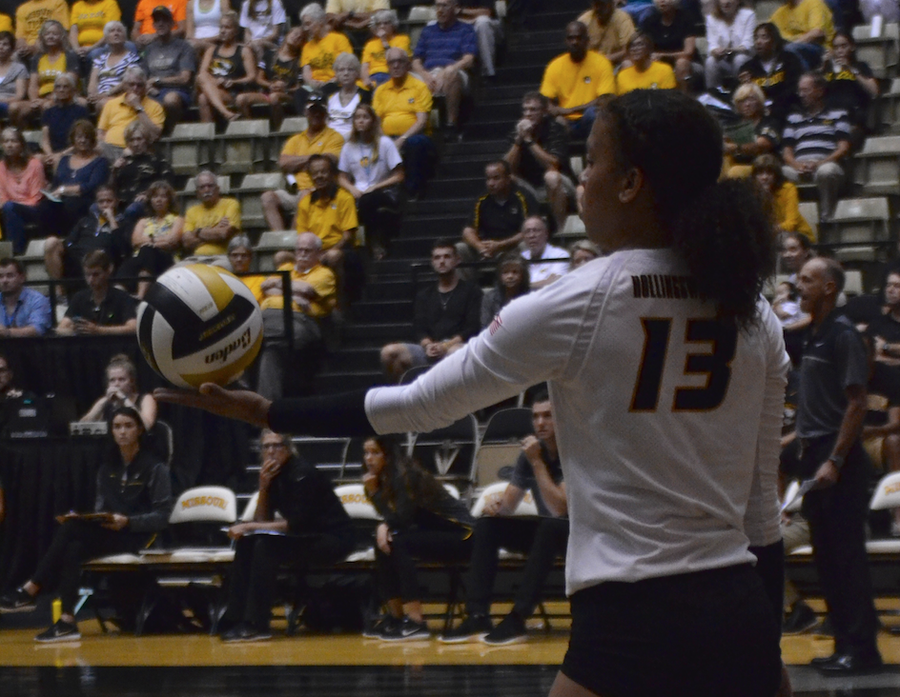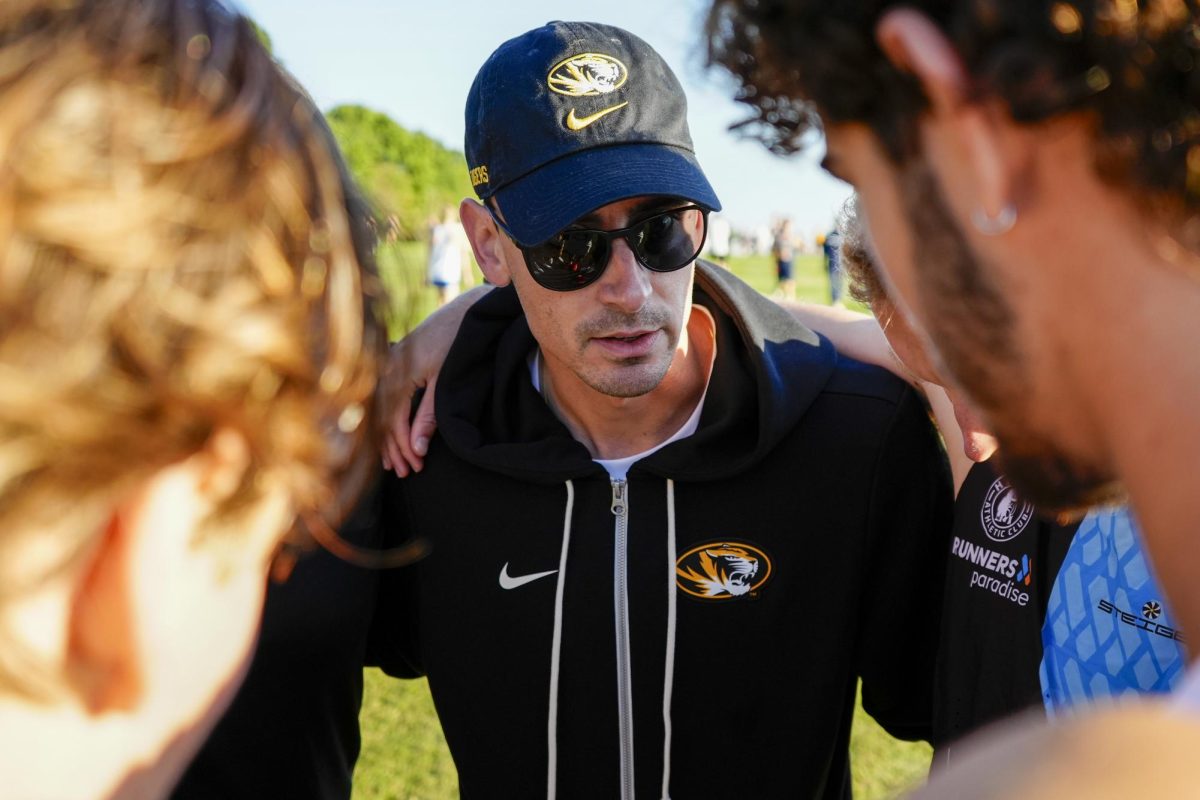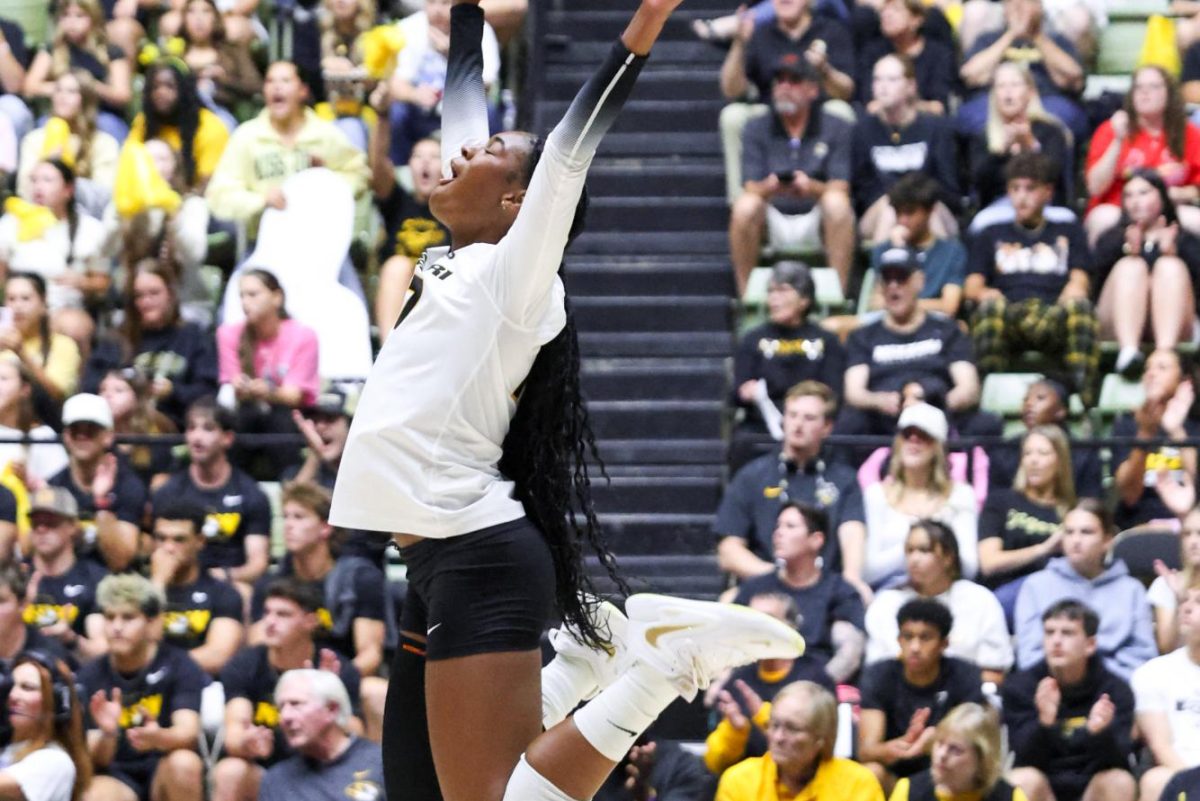On Dec. 9 last year, Missouri volleyball lost 3-1 to Minnesota in the Sweet 16 round of the 2016 NCAA volleyball tournament. The defeat not only signified the end of a spectacular season for the Tigers but also the end of a career for one of the greatest players in the team’s history.
Outside hitter Carly Kan completed her senior season ranked second in Mizzou history in kills (1,677), and third in points (1,905). But where the Tigers feel her absence the most is on defense, where Kan’s 1,445 digs ranks fourth all-time.
In the offseason, head coach Wayne Kreklow had to make some big decisions about which players would pass in the back row. Traditionally, the two outside hitters would rotate all the way around the court and play in the back row, while the setters would sub in for the opposite hitters when they reach the back row. But Kreklow decided to flip the script, opting to have the opposites play in the back row and the setters subbing in for the outsides in the back row.
“I don’t know if there was any specific point in time [when I made the decision]; it just gradually evolved into that,” Kreklow said. “A lot of it was looking at who our most consistent passers are and what we have to do with the lineup to try to get them on the court as much as we could.”
However, utilizing such an unorthodox formation has its drawbacks. Neither of the starting opposite hitters had much experience playing in the back row before this season. Redshirt senior Kira Larson was a middle blocker for most of her career and only played in the back row for one rotation during her senior year of high school. Freshman Dariana Hollingsworth occasionally played in the back row for the Puerto Rican national team, but only on the right side, never in the middle back position she plays in now.
Both players describe the transition as a challenging one.
“It was pretty rough,” Larson said. “Passing was all very new to me. It’s strange because I’m a fifth-year senior and I feel like I’m learning so much in my fifth year.”
For Larson, the most difficult part was the mental aspect of learning a whole new position with a lot of added responsibilities.
“It can be overwhelming because you have so much responsibility, and if it’s not going well, it’s frustrating,” Larson said. “I need to pass; I need to play defense; I need to block; I need to hit; I need to serve. It’s just a lot at one time.”
Larson is also adjusting to playing all six rotations, as opposed to the three rotations that she had been playing her entire career until this season. Last season, Larson would be subbed out for a setter once she rotated into the back row, but this season she plays the entire match.
“When you only play three rotations, you sub out and you can readjust your mindset every time you go in,” Larson said. “You can talk to your teammates about what you are going to work on and what your focus is going to be. The thing about playing six rotations is that when you don’t sub out, you have to reset faster. I don’t have time to be like, ‘Kira you got this.’ It’s a lot quicker, and for me, it was very mentally exhausting at first.”
For Hollingsworth, the biggest challenge was not the mental aspect but improving her passing abilities.
“I have never been a great defensive player and now I’ve been given the responsibility of being a full-time defensive player,” Hollingsworth said. “It takes a whole lot of skill and a whole lot of patience. You’re going to get worse before you get better.”
Despite the early struggles and frustrations, the opposites have taken up their new positions with tenacity and without fear. Each player has put in thousands of repetitions and countless hours of practice in order to fine-tune their defense.
“I’m on my ass 24/7 about everything because it’s the little things that make it perfect,” Hollingsworth said. “Making my angles early, holding my platform, not sweeping, getting my feet to the ball. It’s a whole lot of details, a whole lot of skill mixed into passing.”
Larson’s 171 digs and Hollingsworth’s 122 digs this season rank fifth and 20th, respectively, in the Southeastern Conference, among SEC players who are not liberos or defensive specialists.
Kreklow is pleased with how quickly and successfully his opposite hitters have evolved their style of play.
“They literally have just worked themselves into being pretty good passers,” Kreklow said.
The players have equally high praise for their coaches and for assistant coach Joshua Taylor in particular, as Taylor has been working closest with the hitters.
“Josh has been an incredible help,” Hollingsworth said. “He tells me, ‘You’re doing great, but you need to let yourself breathe. Give yourself some credit because you are doing well.’ He gives me pointers every time I’m in a drill.”
Despite getting off to a rocky start in their relationships with playing defense, the opposites have come to love passing and the added dimensions to their games. Although it was initially difficult for Larson to play all six rotations, she now realizes the benefits of having more game time.
“My favorite part is the impact I have on the game,” Larson said. “The fact that I can be able to lead in those tough moments and the fact that I can always be there for my teammates.”
Hollingsworth, a freshman, is willing to continue to play in the back row in her future years at Mizzou. She even said that she might be open to changing positions in order to pass more.
“I like a challenge and the fact that I’m not a great passer yet is a challenge,” Hollingsworth said. “I’m standing back there knowing that they will serve at me, and I prefer that over hitting any day.”
_Edited by Eli Lederman | [email protected]_













